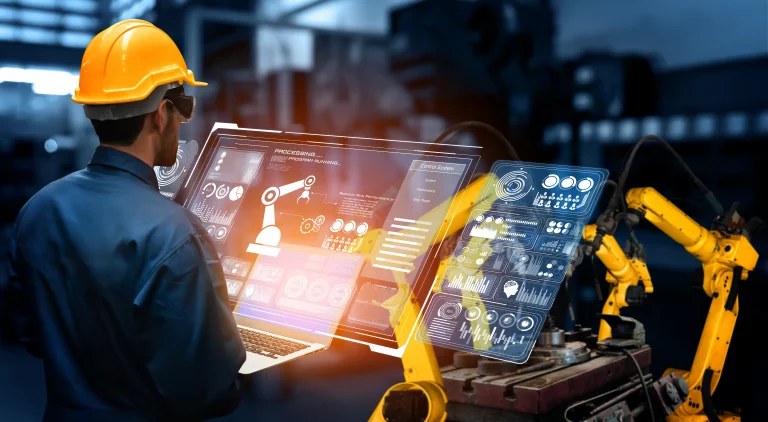The landscape of American manufacturing is undergoing a significant transformation. Automation, driven by advancements in robotics, artificial intelligence (AI), and machine learning, is at the forefront of this change. The implications of automation for the U.S. manufacturing sector are profound, influencing economic growth, employment patterns, and the global competitiveness of American industries. This article delves into the various facets of automation in manufacturing and its potential impacts on the United States.

The Rise of Automation in Manufacturing
Automation in manufacturing refers to the use of technology to perform tasks that were previously done by human workers. This includes everything from robotic arms on assembly lines to AI systems that optimize production processes. The integration of these technologies aims to increase efficiency, reduce costs, and improve product quality.
In recent years, automation has accelerated due to several factors. Technological advancements have made robots more versatile and affordable. AI and machine learning have enabled predictive maintenance and smarter supply chain management. Moreover, the COVID-19 pandemic highlighted the vulnerabilities of traditional manufacturing setups, prompting companies to adopt more resilient and flexible automated systems.
Economic Impacts
The economic implications of automation in American manufacturing are multifaceted. On one hand, automation can lead to significant cost savings and productivity gains. Automated systems can operate 24/7, reducing downtime and increasing output. This can enhance the competitiveness of American products in the global market, potentially leading to increased exports and economic growth.
Additionally, automation can lead to innovation. By handling repetitive and dangerous tasks, automation frees up human workers to focus on more complex and creative aspects of manufacturing, such as research and development. This can foster a culture of innovation and help maintain the U.S.’s technological edge.
However, there are concerns about the potential negative economic impacts. The initial investment in automation technology can be substantial, which may be a barrier for small and medium-sized enterprises (SMEs). Furthermore, the cost savings from automation might not always translate into lower prices for consumers, as companies may choose to retain the additional profits.
Employment Impacts
One of the most contentious issues surrounding automation in manufacturing is its impact on employment. Automation inevitably leads to the displacement of some jobs, particularly those involving routine and repetitive tasks. According to a report by the McKinsey Global Institute, by 2030, automation could displace between 400 million and 800 million jobs worldwide, with a significant portion in manufacturing.
In the U.S., the impact will likely vary by region and industry. Areas heavily reliant on manufacturing, such as the Rust Belt, may experience more pronounced job losses. However, the overall impact on employment is complex. While some jobs are lost, others are created. Automation demands new roles in programming, maintenance, and supervision of automated systems. Moreover, industries adjacent to manufacturing, such as technology and logistics, may see job growth as they support the transition to more automated factories.
The key to mitigating the negative employment impacts lies in education and training. Workers displaced by automation need access to reskilling programs that equip them with the skills required for new roles. Governments and companies must collaborate to create training programs that are aligned with the evolving needs of the industry.
Social and Ethical Implications
Beyond economic and employment impacts, automation in manufacturing raises several social and ethical questions. One major concern is the potential for increased inequality. If the benefits of automation are not widely distributed, there could be a growing divide between those who possess the skills to thrive in an automated environment and those who do not. This could exacerbate existing social and economic inequalities.
Moreover, the deployment of automation technologies raises questions about worker rights and protections. As machines take over more tasks, the nature of work itself may change, requiring new regulations to ensure fair treatment and safety for human workers.
The Future Outlook
Looking ahead, the future of American manufacturing with automation is promising yet challenging. To fully harness the benefits of automation, the U.S. must navigate several key areas.
Firstly, investment in research and development is crucial. Continued innovation in automation technologies will drive further efficiency gains and open up new possibilities for manufacturing. Public and private sector collaboration can help ensure that the U.S. remains at the forefront of technological advancements.
Secondly, policy frameworks must be updated to reflect the changing nature of work. This includes modernizing labor laws, investing in education and training programs, and providing social safety nets for those displaced by automation.
Thirdly, ethical considerations must be at the forefront of the automation agenda. Ensuring that the benefits of automation are equitably distributed and that worker rights are protected will be essential for social stability and cohesion.
Conclusion
Automation is set to redefine the landscape of American manufacturing. While it promises significant economic benefits and the potential for increased global competitiveness, it also poses challenges, particularly in terms of employment and social equity. By proactively addressing these challenges through investment, policy reform, and ethical considerations, the U.S. can ensure that the future of manufacturing is not only automated but also inclusive and sustainable. The road ahead may be complex, but with strategic foresight and collaboration, American manufacturing can emerge stronger and more resilient in the age of automation.


